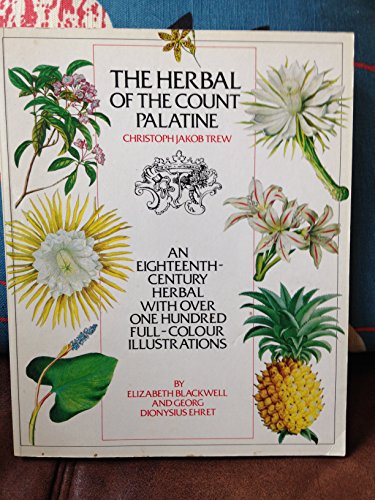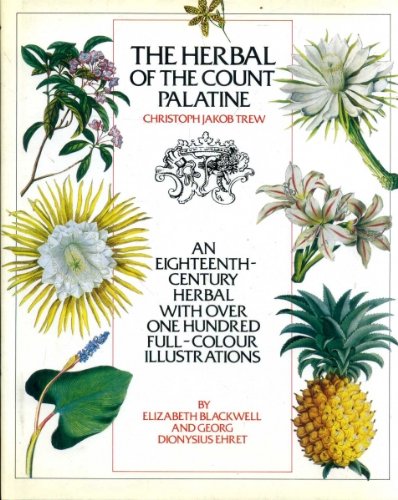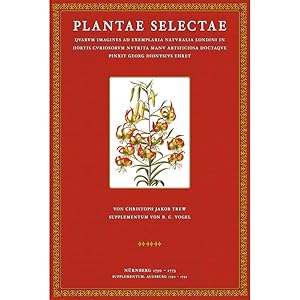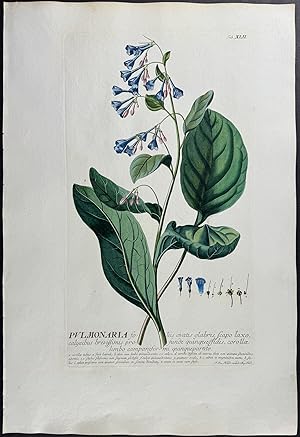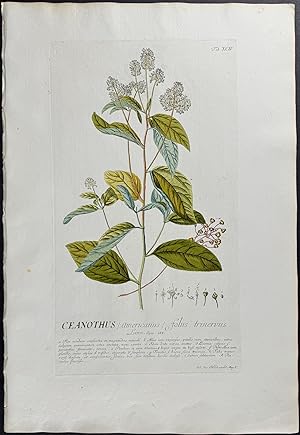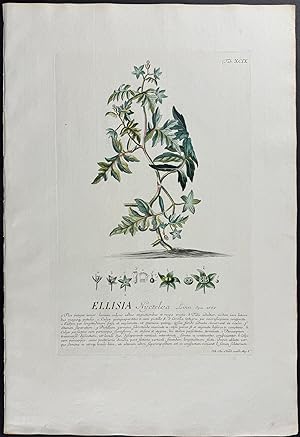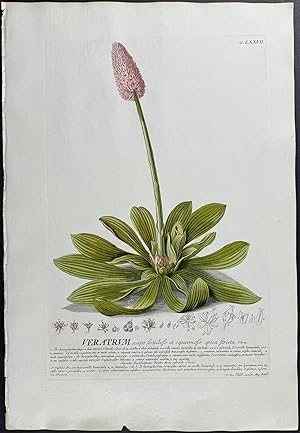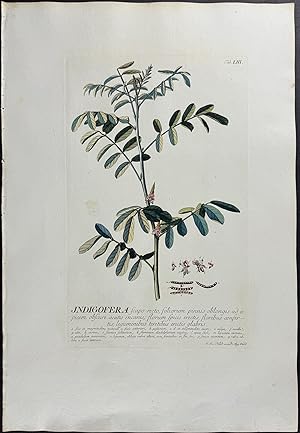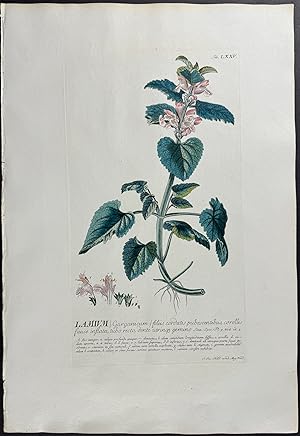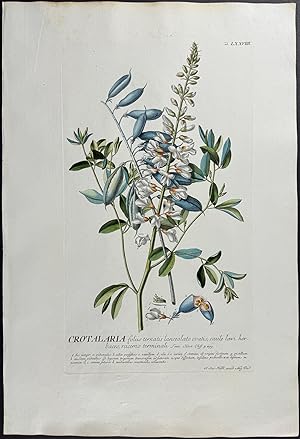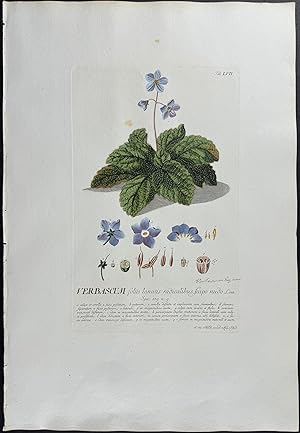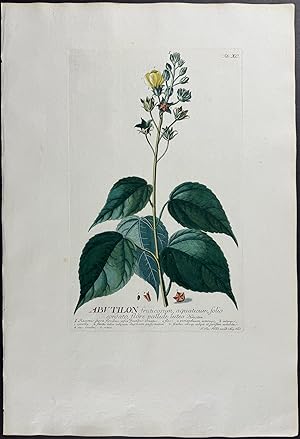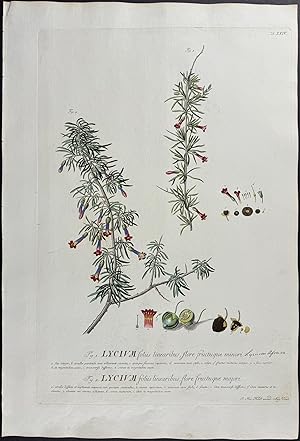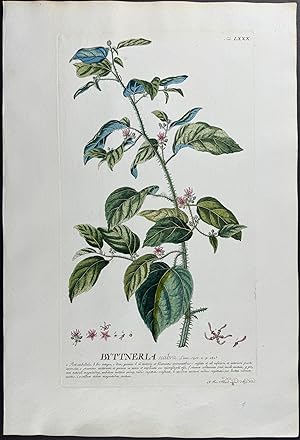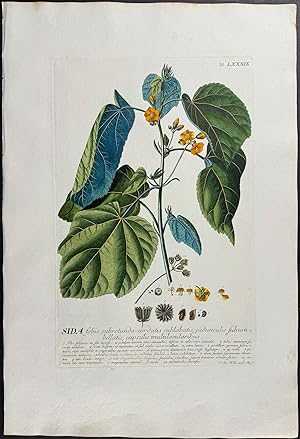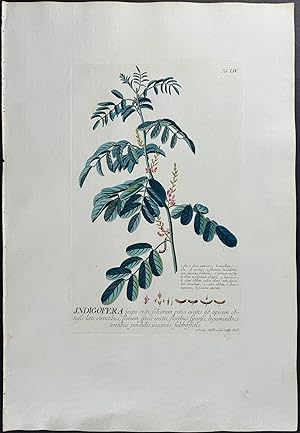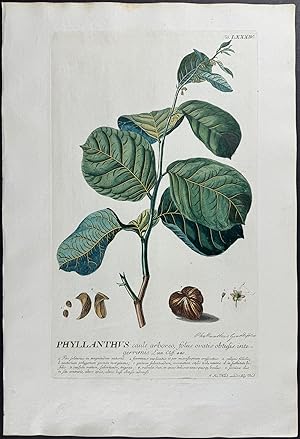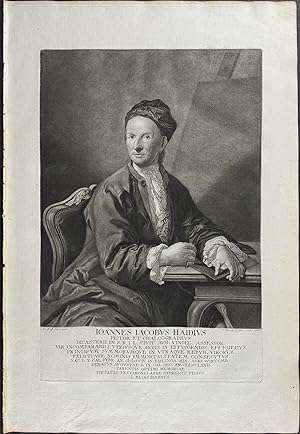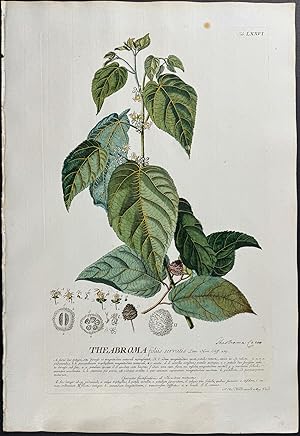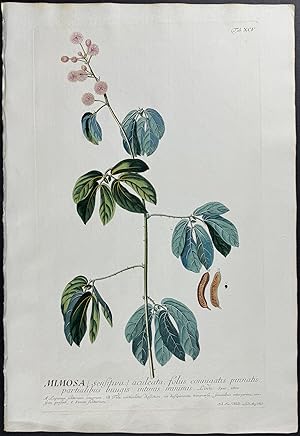christoph jakob trew georg dionysius (67 résultats)
CommentairesFiltres de recherche
Type d'article
- Tous les types de produits
- Livres (5)
- Magazines & Périodiques (Aucun autre résultat ne correspond à ces critères)
- Bandes dessinées (Aucun autre résultat ne correspond à ces critères)
- Partitions de musique (Aucun autre résultat ne correspond à ces critères)
- Art, Affiches et Gravures (62)
- Photographies (Aucun autre résultat ne correspond à ces critères)
- Cartes (Aucun autre résultat ne correspond à ces critères)
- Manuscrits & Papiers anciens (Aucun autre résultat ne correspond à ces critères)
Etat
- Tous
- Neuf (Aucun autre résultat ne correspond à ces critères)
- Ancien ou d'occasion (67)
Particularités
- Ed. originale (Aucun autre résultat ne correspond à ces critères)
- Signé (Aucun autre résultat ne correspond à ces critères)
- Jaquette (Aucun autre résultat ne correspond à ces critères)
- Avec images (64)
- Sans impressions à la demande (67)
Livraison gratuite
- Livraison gratuite à destination de France (Aucun autre résultat ne correspond à ces critères)
Evaluation du vendeur
-
The Herbal of the Count Palatine
Edité par Harrap, 1985
ISBN 10 : 0245543082 ISBN 13 : 9780245543081
Vendeur : Booked Experiences Bookstore, Burlington, ON, Canada
Soft cover. Etat : Near Fine. Elizabeth Blackwell and Georg Dionysius Ehret (illustrateur). First. pp. 135 with index of names. an 18th c herbal with over 100 full colour illustrations Size: 8vo - over 7¾" - 9¾" tall.
-
The Herbal Of The Count Palatine
Edité par Harrap, London, 1985
ISBN 10 : 0245543023 ISBN 13 : 9780245543029
Vendeur : Terrace Horticultural Books, St. Paul, MN, Etats-Unis
Hardcover. Etat : Very Good. Color Illustrations (illustrateur). First Edition As Such. Copyright Date: 1984 Sm Quarto, 1985, PP.135, Reproduction Of An Eighteenth Century Herbal.
Plus de choix d'achat de la part d'autres vendeurs sur AbeBooks
Offres d'occasion à partir de EUR 34,04
Trouvez également Couverture rigide
-
Plantae selectae quarum imagines ad exemplaria naturalia Londini in hortis curiosorum nutritamanu artificiosa doctaque pinxit Georgius Dionysius Ehret in naes incidit et viviscoloribus repraesentavit Joannes Iacobus Haid
Edité par Fines Mundi GmbH Saarbrücken, 2008
ISBN 10 : 394769315X ISBN 13 : 9783947693153
Vendeur : Versandantiquariat Nussbaum, Bernkastel-Kues, RP, Allemagne
Etat : Wie neu. VI, 70 Seiten, IV S. Mit 120 colorierten Tafeln und 4 Bildnissen Neu / 10 Teile in 1 Band incl. dem Supplementum plantarum selectarum. Die Vorlagen stammen vom Botaniker und Maler Georg Dionysius Ehret. Der Sammler, Förderer und Herausgeber Christoph Jakob Trew machte Ehrets Malkunst erstmals der Öffentlichkeit zugänglich. J. J. Haid war der beauftragte Kupferstecher, Drucker und Colorator des Werkes. Nach Trews Tod wurde das Prachtwerk unter der Leitung des Botanikers Benedict Christian Vogel mit 20 weiteren Tafeln vollendet und 1790 - 1792 mit einem Supplement herausgegeben. Mit Bildnissen von Ch. J. Trew, G. D. Ehret, B. C. Vogel und J. J. Haid Gegenüber dem Original um etwa 15 % verkleinerte Ausgabe. la Gewicht in Gramm: 3550 44,3 x 30,5 cm, gebundene Ausgabe Faksimile-Reprint der Ausgabe 1750-1773 Nürnberg und Augsburg.
-
Lungwort
Edité par Nuremberg, 1750
Vendeur : Trillium Antique Prints & Rare Books, Franklin, TN, Etats-Unis
Art / Affiche / Gravure
Etat : Fine. This elegant folio, botanical engraving is from Christoph Jakob Trewâs work Plantae Selectae. The work was published in Nuremberg between 1750 and 1773. Georg Dionysius Ehret was the artist for the work and was considered one of the most influential artists in the world of botanical illustration. Ehretâs plates are both remarkable and scientifically accurate. The original hand-coloring was completed by J. J. Haid.Plantae Selectae is one of the greatest of all eighteenth-century botanical books, drawn by the greatest of eighteenth-century botanical artists, George Dionysius Ehret. Linnaeus, wrote to Trew, in Latin, that "The miracles of our century in the natural sciences are your work of Ehret's plants.nothing to equal them was seen in the past or will be in the future."Christoph Jakob Trew, a physician and botanist, had for a number of years been an admirer of Ehret's work. Ehret, a brilliant botanical artist, was unrivalled in his ability to "achieve realism, majesty, ineffable colour, all in one breathtaking look." (Hunt) Born in Heidelberg in 1710, he originally worked as a gardener and practised drawing in his spare time. His artistic abilities led him to the service of a Regensburg banker named Leskenkohl, and it was during this period that Trew met Ehret.Trew was to remain a friend and patron of Ehret's throughout his life, and by 1742, the germ of what was to become the present publication was already under discussion when Trew wrote to Christian Thran in Carlsruhe "Every year I receive some beautifully painted exotic plants [by Ehret] and have already more than one hundred of them."Ehret moved to London in the late 1730s, where he painted the recently introduced exotics at the Chelsea Physic Garden and established himself as a teacher of flower-painting and botany. Discussions about the projected work continued by letter until 1748, when Johann Jacob Haid from Augsburg agreed to produce the engravings from Ehret's drawings. --- The work is in very good to excellent condition overall. There may be a few minor imperfections or faint marks to be expected with age. Please review the image carefully for condition and contact us with any questions. --- Paper Size ~ 13 1/2" by 20 1/4".
-
California Lilac
Edité par Nuremberg, 1750
Vendeur : Trillium Antique Prints & Rare Books, Franklin, TN, Etats-Unis
Art / Affiche / Gravure
Etat : Fine. This elegant folio, botanical engraving is from Christoph Jakob Trewâs work Plantae Selectae. The work was published in Nuremberg between 1750 and 1773. Georg Dionysius Ehret was the artist for the work and was considered one of the most influential artists in the world of botanical illustration. Ehretâs plates are both remarkable and scientifically accurate. The original hand-coloring was completed by J. J. Haid.Plantae Selectae is one of the greatest of all eighteenth-century botanical books, drawn by the greatest of eighteenth-century botanical artists, George Dionysius Ehret. Linnaeus, wrote to Trew, in Latin, that "The miracles of our century in the natural sciences are your work of Ehret's plants.nothing to equal them was seen in the past or will be in the future."Christoph Jakob Trew, a physician and botanist, had for a number of years been an admirer of Ehret's work. Ehret, a brilliant botanical artist, was unrivalled in his ability to "achieve realism, majesty, ineffable colour, all in one breathtaking look." (Hunt) Born in Heidelberg in 1710, he originally worked as a gardener and practised drawing in his spare time. His artistic abilities led him to the service of a Regensburg banker named Leskenkohl, and it was during this period that Trew met Ehret.Trew was to remain a friend and patron of Ehret's throughout his life, and by 1742, the germ of what was to become the present publication was already under discussion when Trew wrote to Christian Thran in Carlsruhe "Every year I receive some beautifully painted exotic plants [by Ehret] and have already more than one hundred of them."Ehret moved to London in the late 1730s, where he painted the recently introduced exotics at the Chelsea Physic Garden and established himself as a teacher of flower-painting and botany. Discussions about the projected work continued by letter until 1748, when Johann Jacob Haid from Augsburg agreed to produce the engravings from Ehret's drawings. --- The work is in very good to excellent condition overall. There may be a few minor imperfections or faint marks to be expected with age. Please review the image carefully for condition and contact us with any questions. --- Paper Size ~ 13 1/2" by 20 1/4".
-
Ellisia
Edité par Nuremberg, 1750
Vendeur : Trillium Antique Prints & Rare Books, Franklin, TN, Etats-Unis
Art / Affiche / Gravure
Etat : Fine. This elegant folio, botanical engraving is from Christoph Jakob Trewâs work Plantae Selectae. The work was published in Nuremberg between 1750 and 1773. Georg Dionysius Ehret was the artist for the work and was considered one of the most influential artists in the world of botanical illustration. Ehretâs plates are both remarkable and scientifically accurate. The original hand-coloring was completed by J. J. Haid.Plantae Selectae is one of the greatest of all eighteenth-century botanical books, drawn by the greatest of eighteenth-century botanical artists, George Dionysius Ehret. Linnaeus, wrote to Trew, in Latin, that "The miracles of our century in the natural sciences are your work of Ehret's plants.nothing to equal them was seen in the past or will be in the future."Christoph Jakob Trew, a physician and botanist, had for a number of years been an admirer of Ehret's work. Ehret, a brilliant botanical artist, was unrivalled in his ability to "achieve realism, majesty, ineffable colour, all in one breathtaking look." (Hunt) Born in Heidelberg in 1710, he originally worked as a gardener and practised drawing in his spare time. His artistic abilities led him to the service of a Regensburg banker named Leskenkohl, and it was during this period that Trew met Ehret.Trew was to remain a friend and patron of Ehret's throughout his life, and by 1742, the germ of what was to become the present publication was already under discussion when Trew wrote to Christian Thran in Carlsruhe "Every year I receive some beautifully painted exotic plants [by Ehret] and have already more than one hundred of them."Ehret moved to London in the late 1730s, where he painted the recently introduced exotics at the Chelsea Physic Garden and established himself as a teacher of flower-painting and botany. Discussions about the projected work continued by letter until 1748, when Johann Jacob Haid from Augsburg agreed to produce the engravings from Ehret's drawings. --- The work is in very good to excellent condition overall. There may be a few minor imperfections or faint marks to be expected with age. Please review the image carefully for condition and contact us with any questions. --- Paper Size ~ 13 1/2" by 20 1/4".
-
Indian Poke
Edité par Nuremberg, 1750
Vendeur : Trillium Antique Prints & Rare Books, Franklin, TN, Etats-Unis
Art / Affiche / Gravure
Etat : Fine. This elegant folio, botanical engraving is from Christoph Jakob Trewâs work Plantae Selectae. The work was published in Nuremberg between 1750 and 1773. Georg Dionysius Ehret was the artist for the work and was considered one of the most influential artists in the world of botanical illustration. Ehretâs plates are both remarkable and scientifically accurate. The original hand-coloring was completed by J. J. Haid.Plantae Selectae is one of the greatest of all eighteenth-century botanical books, drawn by the greatest of eighteenth-century botanical artists, George Dionysius Ehret. Linnaeus, wrote to Trew, in Latin, that "The miracles of our century in the natural sciences are your work of Ehret's plants.nothing to equal them was seen in the past or will be in the future."Christoph Jakob Trew, a physician and botanist, had for a number of years been an admirer of Ehret's work. Ehret, a brilliant botanical artist, was unrivalled in his ability to "achieve realism, majesty, ineffable colour, all in one breathtaking look." (Hunt) Born in Heidelberg in 1710, he originally worked as a gardener and practised drawing in his spare time. His artistic abilities led him to the service of a Regensburg banker named Leskenkohl, and it was during this period that Trew met Ehret.Trew was to remain a friend and patron of Ehret's throughout his life, and by 1742, the germ of what was to become the present publication was already under discussion when Trew wrote to Christian Thran in Carlsruhe "Every year I receive some beautifully painted exotic plants [by Ehret] and have already more than one hundred of them."Ehret moved to London in the late 1730s, where he painted the recently introduced exotics at the Chelsea Physic Garden and established himself as a teacher of flower-painting and botany. Discussions about the projected work continued by letter until 1748, when Johann Jacob Haid from Augsburg agreed to produce the engravings from Ehret's drawings. --- The work is in very good to excellent condition overall. There may be a few minor imperfections or faint marks to be expected with age. Please review the image carefully for condition and contact us with any questions. --- Paper Size ~ 13 1/2" by 20 1/4".
-
Indigo
Edité par Nuremberg, 1750
Vendeur : Trillium Antique Prints & Rare Books, Franklin, TN, Etats-Unis
Art / Affiche / Gravure
Etat : Fine. This elegant folio, botanical engraving is from Christoph Jakob Trewâs work Plantae Selectae. The work was published in Nuremberg between 1750 and 1773. Georg Dionysius Ehret was the artist for the work and was considered one of the most influential artists in the world of botanical illustration. Ehretâs plates are both remarkable and scientifically accurate. The original hand-coloring was completed by J. J. Haid.Plantae Selectae is one of the greatest of all eighteenth-century botanical books, drawn by the greatest of eighteenth-century botanical artists, George Dionysius Ehret. Linnaeus, wrote to Trew, in Latin, that "The miracles of our century in the natural sciences are your work of Ehret's plants.nothing to equal them was seen in the past or will be in the future."Christoph Jakob Trew, a physician and botanist, had for a number of years been an admirer of Ehret's work. Ehret, a brilliant botanical artist, was unrivalled in his ability to "achieve realism, majesty, ineffable colour, all in one breathtaking look." (Hunt) Born in Heidelberg in 1710, he originally worked as a gardener and practised drawing in his spare time. His artistic abilities led him to the service of a Regensburg banker named Leskenkohl, and it was during this period that Trew met Ehret.Trew was to remain a friend and patron of Ehret's throughout his life, and by 1742, the germ of what was to become the present publication was already under discussion when Trew wrote to Christian Thran in Carlsruhe "Every year I receive some beautifully painted exotic plants [by Ehret] and have already more than one hundred of them."Ehret moved to London in the late 1730s, where he painted the recently introduced exotics at the Chelsea Physic Garden and established himself as a teacher of flower-painting and botany. Discussions about the projected work continued by letter until 1748, when Johann Jacob Haid from Augsburg agreed to produce the engravings from Ehret's drawings. --- The work is in very good to excellent condition overall. There may be a few minor imperfections or faint marks to be expected with age. Please review the image carefully for condition and contact us with any questions. --- Paper Size ~ 13 1/2" by 20 1/4".
-
Pepper
Edité par Nuremberg, 1750
Vendeur : Trillium Antique Prints & Rare Books, Franklin, TN, Etats-Unis
Art / Affiche / Gravure
Etat : Fine. This elegant folio, botanical engraving is from Christoph Jakob Trewâs work Plantae Selectae. The work was published in Nuremberg between 1750 and 1773. Georg Dionysius Ehret was the artist for the work and was considered one of the most influential artists in the world of botanical illustration. Ehretâs plates are both remarkable and scientifically accurate. The original hand-coloring was completed by J. J. Haid.Plantae Selectae is one of the greatest of all eighteenth-century botanical books, drawn by the greatest of eighteenth-century botanical artists, George Dionysius Ehret. Linnaeus, wrote to Trew, in Latin, that "The miracles of our century in the natural sciences are your work of Ehret's plants.nothing to equal them was seen in the past or will be in the future."Christoph Jakob Trew, a physician and botanist, had for a number of years been an admirer of Ehret's work. Ehret, a brilliant botanical artist, was unrivalled in his ability to "achieve realism, majesty, ineffable colour, all in one breathtaking look." (Hunt) Born in Heidelberg in 1710, he originally worked as a gardener and practised drawing in his spare time. His artistic abilities led him to the service of a Regensburg banker named Leskenkohl, and it was during this period that Trew met Ehret.Trew was to remain a friend and patron of Ehret's throughout his life, and by 1742, the germ of what was to become the present publication was already under discussion when Trew wrote to Christian Thran in Carlsruhe "Every year I receive some beautifully painted exotic plants [by Ehret] and have already more than one hundred of them."Ehret moved to London in the late 1730s, where he painted the recently introduced exotics at the Chelsea Physic Garden and established himself as a teacher of flower-painting and botany. Discussions about the projected work continued by letter until 1748, when Johann Jacob Haid from Augsburg agreed to produce the engravings from Ehret's drawings. --- The work is in very good to excellent condition overall. There may be a few minor imperfections or faint marks to be expected with age. Please review the image carefully for condition and contact us with any questions. --- Paper Size ~ 13 1/2" by 20 1/4".
-
Viburnum
Edité par Nuremberg, 1750
Vendeur : Trillium Antique Prints & Rare Books, Franklin, TN, Etats-Unis
Art / Affiche / Gravure
Etat : Fine. This elegant folio, botanical engraving is from Christoph Jakob Trewâs work Plantae Selectae. The work was published in Nuremberg between 1750 and 1773. Georg Dionysius Ehret was the artist for the work and was considered one of the most influential artists in the world of botanical illustration. Ehretâs plates are both remarkable and scientifically accurate. The original hand-coloring was completed by J. J. Haid.Plantae Selectae is one of the greatest of all eighteenth-century botanical books, drawn by the greatest of eighteenth-century botanical artists, George Dionysius Ehret. Linnaeus, wrote to Trew, in Latin, that "The miracles of our century in the natural sciences are your work of Ehret's plants.nothing to equal them was seen in the past or will be in the future."Christoph Jakob Trew, a physician and botanist, had for a number of years been an admirer of Ehret's work. Ehret, a brilliant botanical artist, was unrivalled in his ability to "achieve realism, majesty, ineffable colour, all in one breathtaking look." (Hunt) Born in Heidelberg in 1710, he originally worked as a gardener and practised drawing in his spare time. His artistic abilities led him to the service of a Regensburg banker named Leskenkohl, and it was during this period that Trew met Ehret.Trew was to remain a friend and patron of Ehret's throughout his life, and by 1742, the germ of what was to become the present publication was already under discussion when Trew wrote to Christian Thran in Carlsruhe "Every year I receive some beautifully painted exotic plants [by Ehret] and have already more than one hundred of them."Ehret moved to London in the late 1730s, where he painted the recently introduced exotics at the Chelsea Physic Garden and established himself as a teacher of flower-painting and botany. Discussions about the projected work continued by letter until 1748, when Johann Jacob Haid from Augsburg agreed to produce the engravings from Ehret's drawings. --- The work is in very good to excellent condition overall. There may be a few minor imperfections or faint marks to be expected with age. Please review the image carefully for condition and contact us with any questions. --- Paper Size ~ 13 1/2" by 20 1/4".
-
Dead-Nettle
Edité par Nuremberg, 1750
Vendeur : Trillium Antique Prints & Rare Books, Franklin, TN, Etats-Unis
Art / Affiche / Gravure
Etat : Fine. This elegant folio, botanical engraving is from Christoph Jakob Trewâs work Plantae Selectae. The work was published in Nuremberg between 1750 and 1773. Georg Dionysius Ehret was the artist for the work and was considered one of the most influential artists in the world of botanical illustration. Ehretâs plates are both remarkable and scientifically accurate. The original hand-coloring was completed by J. J. Haid.Plantae Selectae is one of the greatest of all eighteenth-century botanical books, drawn by the greatest of eighteenth-century botanical artists, George Dionysius Ehret. Linnaeus, wrote to Trew, in Latin, that "The miracles of our century in the natural sciences are your work of Ehret's plants.nothing to equal them was seen in the past or will be in the future."Christoph Jakob Trew, a physician and botanist, had for a number of years been an admirer of Ehret's work. Ehret, a brilliant botanical artist, was unrivalled in his ability to "achieve realism, majesty, ineffable colour, all in one breathtaking look." (Hunt) Born in Heidelberg in 1710, he originally worked as a gardener and practised drawing in his spare time. His artistic abilities led him to the service of a Regensburg banker named Leskenkohl, and it was during this period that Trew met Ehret.Trew was to remain a friend and patron of Ehret's throughout his life, and by 1742, the germ of what was to become the present publication was already under discussion when Trew wrote to Christian Thran in Carlsruhe "Every year I receive some beautifully painted exotic plants [by Ehret] and have already more than one hundred of them."Ehret moved to London in the late 1730s, where he painted the recently introduced exotics at the Chelsea Physic Garden and established himself as a teacher of flower-painting and botany. Discussions about the projected work continued by letter until 1748, when Johann Jacob Haid from Augsburg agreed to produce the engravings from Ehret's drawings. --- The work is in very good to excellent condition overall. There may be a few minor imperfections or faint marks to be expected with age. Please review the image carefully for condition and contact us with any questions. --- Paper Size ~ 13 1/2" by 20 1/4".
-
Rattlepod
Edité par Nuremberg, 1750
Vendeur : Trillium Antique Prints & Rare Books, Franklin, TN, Etats-Unis
Art / Affiche / Gravure
Etat : Fine. This elegant folio, botanical engraving is from Christoph Jakob Trewâs work Plantae Selectae. The work was published in Nuremberg between 1750 and 1773. Georg Dionysius Ehret was the artist for the work and was considered one of the most influential artists in the world of botanical illustration. Ehretâs plates are both remarkable and scientifically accurate. The original hand-coloring was completed by J. J. Haid.Plantae Selectae is one of the greatest of all eighteenth-century botanical books, drawn by the greatest of eighteenth-century botanical artists, George Dionysius Ehret. Linnaeus, wrote to Trew, in Latin, that "The miracles of our century in the natural sciences are your work of Ehret's plants.nothing to equal them was seen in the past or will be in the future."Christoph Jakob Trew, a physician and botanist, had for a number of years been an admirer of Ehret's work. Ehret, a brilliant botanical artist, was unrivalled in his ability to "achieve realism, majesty, ineffable colour, all in one breathtaking look." (Hunt) Born in Heidelberg in 1710, he originally worked as a gardener and practised drawing in his spare time. His artistic abilities led him to the service of a Regensburg banker named Leskenkohl, and it was during this period that Trew met Ehret.Trew was to remain a friend and patron of Ehret's throughout his life, and by 1742, the germ of what was to become the present publication was already under discussion when Trew wrote to Christian Thran in Carlsruhe "Every year I receive some beautifully painted exotic plants [by Ehret] and have already more than one hundred of them."Ehret moved to London in the late 1730s, where he painted the recently introduced exotics at the Chelsea Physic Garden and established himself as a teacher of flower-painting and botany. Discussions about the projected work continued by letter until 1748, when Johann Jacob Haid from Augsburg agreed to produce the engravings from Ehret's drawings. --- The work is in very good to excellent condition overall. There may be a few minor imperfections or faint marks to be expected with age. Please review the image carefully for condition and contact us with any questions. --- Paper Size ~ 13 1/2" by 20 1/4".
-
Mullein
Edité par Nuremberg, 1750
Vendeur : Trillium Antique Prints & Rare Books, Franklin, TN, Etats-Unis
Art / Affiche / Gravure
Etat : Fine. This elegant folio, botanical engraving is from Christoph Jakob Trewâs work Plantae Selectae. The work was published in Nuremberg between 1750 and 1773. Georg Dionysius Ehret was the artist for the work and was considered one of the most influential artists in the world of botanical illustration. Ehretâs plates are both remarkable and scientifically accurate. The original hand-coloring was completed by J. J. Haid.Plantae Selectae is one of the greatest of all eighteenth-century botanical books, drawn by the greatest of eighteenth-century botanical artists, George Dionysius Ehret. Linnaeus, wrote to Trew, in Latin, that "The miracles of our century in the natural sciences are your work of Ehret's plants.nothing to equal them was seen in the past or will be in the future."Christoph Jakob Trew, a physician and botanist, had for a number of years been an admirer of Ehret's work. Ehret, a brilliant botanical artist, was unrivalled in his ability to "achieve realism, majesty, ineffable colour, all in one breathtaking look." (Hunt) Born in Heidelberg in 1710, he originally worked as a gardener and practised drawing in his spare time. His artistic abilities led him to the service of a Regensburg banker named Leskenkohl, and it was during this period that Trew met Ehret.Trew was to remain a friend and patron of Ehret's throughout his life, and by 1742, the germ of what was to become the present publication was already under discussion when Trew wrote to Christian Thran in Carlsruhe "Every year I receive some beautifully painted exotic plants [by Ehret] and have already more than one hundred of them."Ehret moved to London in the late 1730s, where he painted the recently introduced exotics at the Chelsea Physic Garden and established himself as a teacher of flower-painting and botany. Discussions about the projected work continued by letter until 1748, when Johann Jacob Haid from Augsburg agreed to produce the engravings from Ehret's drawings. --- The work is in very good to excellent condition overall. There may be a few minor imperfections or faint marks to be expected with age. Please review the image carefully for condition and contact us with any questions. --- Paper Size ~ 13 1/2" by 20 1/4".
-
Abutilon
Edité par Nuremberg, 1750
Vendeur : Trillium Antique Prints & Rare Books, Franklin, TN, Etats-Unis
Art / Affiche / Gravure
Etat : Fine. This elegant folio, botanical engraving is from Christoph Jakob Trewâs work Plantae Selectae. The work was published in Nuremberg between 1750 and 1773. Georg Dionysius Ehret was the artist for the work and was considered one of the most influential artists in the world of botanical illustration. Ehretâs plates are both remarkable and scientifically accurate. The original hand-coloring was completed by J. J. Haid.Plantae Selectae is one of the greatest of all eighteenth-century botanical books, drawn by the greatest of eighteenth-century botanical artists, George Dionysius Ehret. Linnaeus, wrote to Trew, in Latin, that "The miracles of our century in the natural sciences are your work of Ehret's plants.nothing to equal them was seen in the past or will be in the future."Christoph Jakob Trew, a physician and botanist, had for a number of years been an admirer of Ehret's work. Ehret, a brilliant botanical artist, was unrivalled in his ability to "achieve realism, majesty, ineffable colour, all in one breathtaking look." (Hunt) Born in Heidelberg in 1710, he originally worked as a gardener and practised drawing in his spare time. His artistic abilities led him to the service of a Regensburg banker named Leskenkohl, and it was during this period that Trew met Ehret.Trew was to remain a friend and patron of Ehret's throughout his life, and by 1742, the germ of what was to become the present publication was already under discussion when Trew wrote to Christian Thran in Carlsruhe "Every year I receive some beautifully painted exotic plants [by Ehret] and have already more than one hundred of them."Ehret moved to London in the late 1730s, where he painted the recently introduced exotics at the Chelsea Physic Garden and established himself as a teacher of flower-painting and botany. Discussions about the projected work continued by letter until 1748, when Johann Jacob Haid from Augsburg agreed to produce the engravings from Ehret's drawings. --- The work is in very good to excellent condition overall. There may be a few minor imperfections or faint marks to be expected with age. Please review the image carefully for condition and contact us with any questions. --- Paper Size ~ 13 1/2" by 20 1/4".
-
Periploca
Edité par Nuremberg, 1750
Vendeur : Trillium Antique Prints & Rare Books, Franklin, TN, Etats-Unis
Art / Affiche / Gravure
Etat : Fine. This elegant folio, botanical engraving is from Christoph Jakob Trewâs work Plantae Selectae. The work was published in Nuremberg between 1750 and 1773. Georg Dionysius Ehret was the artist for the work and was considered one of the most influential artists in the world of botanical illustration. Ehretâs plates are both remarkable and scientifically accurate. The original hand-coloring was completed by J. J. Haid.Plantae Selectae is one of the greatest of all eighteenth-century botanical books, drawn by the greatest of eighteenth-century botanical artists, George Dionysius Ehret. Linnaeus, wrote to Trew, in Latin, that "The miracles of our century in the natural sciences are your work of Ehret's plants.nothing to equal them was seen in the past or will be in the future."Christoph Jakob Trew, a physician and botanist, had for a number of years been an admirer of Ehret's work. Ehret, a brilliant botanical artist, was unrivalled in his ability to "achieve realism, majesty, ineffable colour, all in one breathtaking look." (Hunt) Born in Heidelberg in 1710, he originally worked as a gardener and practised drawing in his spare time. His artistic abilities led him to the service of a Regensburg banker named Leskenkohl, and it was during this period that Trew met Ehret.Trew was to remain a friend and patron of Ehret's throughout his life, and by 1742, the germ of what was to become the present publication was already under discussion when Trew wrote to Christian Thran in Carlsruhe "Every year I receive some beautifully painted exotic plants [by Ehret] and have already more than one hundred of them."Ehret moved to London in the late 1730s, where he painted the recently introduced exotics at the Chelsea Physic Garden and established himself as a teacher of flower-painting and botany. Discussions about the projected work continued by letter until 1748, when Johann Jacob Haid from Augsburg agreed to produce the engravings from Ehret's drawings. --- The work is in very good to excellent condition overall. There may be a few minor imperfections or faint marks to be expected with age. Please review the image carefully for condition and contact us with any questions. --- Paper Size ~ 13 1/2" by 20 1/4".
-
Heliocarpus
Edité par Nuremberg, 1750
Vendeur : Trillium Antique Prints & Rare Books, Franklin, TN, Etats-Unis
Art / Affiche / Gravure
Etat : Fine. This elegant folio, botanical engraving is from Christoph Jakob Trewâs work Plantae Selectae. The work was published in Nuremberg between 1750 and 1773. Georg Dionysius Ehret was the artist for the work and was considered one of the most influential artists in the world of botanical illustration. Ehretâs plates are both remarkable and scientifically accurate. The original hand-coloring was completed by J. J. Haid.Plantae Selectae is one of the greatest of all eighteenth-century botanical books, drawn by the greatest of eighteenth-century botanical artists, George Dionysius Ehret. Linnaeus, wrote to Trew, in Latin, that "The miracles of our century in the natural sciences are your work of Ehret's plants.nothing to equal them was seen in the past or will be in the future."Christoph Jakob Trew, a physician and botanist, had for a number of years been an admirer of Ehret's work. Ehret, a brilliant botanical artist, was unrivalled in his ability to "achieve realism, majesty, ineffable colour, all in one breathtaking look." (Hunt) Born in Heidelberg in 1710, he originally worked as a gardener and practised drawing in his spare time. His artistic abilities led him to the service of a Regensburg banker named Leskenkohl, and it was during this period that Trew met Ehret.Trew was to remain a friend and patron of Ehret's throughout his life, and by 1742, the germ of what was to become the present publication was already under discussion when Trew wrote to Christian Thran in Carlsruhe "Every year I receive some beautifully painted exotic plants [by Ehret] and have already more than one hundred of them."Ehret moved to London in the late 1730s, where he painted the recently introduced exotics at the Chelsea Physic Garden and established himself as a teacher of flower-painting and botany. Discussions about the projected work continued by letter until 1748, when Johann Jacob Haid from Augsburg agreed to produce the engravings from Ehret's drawings. --- The work is in very good to excellent condition overall. There may be a few minor imperfections or faint marks to be expected with age. Please review the image carefully for condition and contact us with any questions. --- Paper Size ~ 13 1/2" by 20 1/4".
-
Bocconia racemosa
Edité par Nuremberg, 1750
Vendeur : Trillium Antique Prints & Rare Books, Franklin, TN, Etats-Unis
Art / Affiche / Gravure
Etat : Fine. This elegant folio, botanical engraving is from Christoph Jakob Trewâs work Plantae Selectae. The work was published in Nuremberg between 1750 and 1773. Georg Dionysius Ehret was the artist for the work and was considered one of the most influential artists in the world of botanical illustration. Ehretâs plates are both remarkable and scientifically accurate. The original hand-coloring was completed by J. J. Haid.Plantae Selectae is one of the greatest of all eighteenth-century botanical books, drawn by the greatest of eighteenth-century botanical artists, George Dionysius Ehret. Linnaeus, wrote to Trew, in Latin, that "The miracles of our century in the natural sciences are your work of Ehret's plants.nothing to equal them was seen in the past or will be in the future."Christoph Jakob Trew, a physician and botanist, had for a number of years been an admirer of Ehret's work. Ehret, a brilliant botanical artist, was unrivalled in his ability to "achieve realism, majesty, ineffable colour, all in one breathtaking look." (Hunt) Born in Heidelberg in 1710, he originally worked as a gardener and practised drawing in his spare time. His artistic abilities led him to the service of a Regensburg banker named Leskenkohl, and it was during this period that Trew met Ehret.Trew was to remain a friend and patron of Ehret's throughout his life, and by 1742, the germ of what was to become the present publication was already under discussion when Trew wrote to Christian Thran in Carlsruhe "Every year I receive some beautifully painted exotic plants [by Ehret] and have already more than one hundred of them."Ehret moved to London in the late 1730s, where he painted the recently introduced exotics at the Chelsea Physic Garden and established himself as a teacher of flower-painting and botany. Discussions about the projected work continued by letter until 1748, when Johann Jacob Haid from Augsburg agreed to produce the engravings from Ehret's drawings. --- The work is in very good to excellent condition overall. There may be a few minor imperfections or faint marks to be expected with age. Please review the image carefully for condition and contact us with any questions. --- Paper Size ~ 13 1/2" by 20 1/4".
-
Indigo
Edité par Nuremberg, 1750
Vendeur : Trillium Antique Prints & Rare Books, Franklin, TN, Etats-Unis
Art / Affiche / Gravure
Etat : Fine. This elegant folio, botanical engraving is from Christoph Jakob Trewâs work Plantae Selectae. The work was published in Nuremberg between 1750 and 1773. Georg Dionysius Ehret was the artist for the work and was considered one of the most influential artists in the world of botanical illustration. Ehretâs plates are both remarkable and scientifically accurate. The original hand-coloring was completed by J. J. Haid.Plantae Selectae is one of the greatest of all eighteenth-century botanical books, drawn by the greatest of eighteenth-century botanical artists, George Dionysius Ehret. Linnaeus, wrote to Trew, in Latin, that "The miracles of our century in the natural sciences are your work of Ehret's plants.nothing to equal them was seen in the past or will be in the future."Christoph Jakob Trew, a physician and botanist, had for a number of years been an admirer of Ehret's work. Ehret, a brilliant botanical artist, was unrivalled in his ability to "achieve realism, majesty, ineffable colour, all in one breathtaking look." (Hunt) Born in Heidelberg in 1710, he originally worked as a gardener and practised drawing in his spare time. His artistic abilities led him to the service of a Regensburg banker named Leskenkohl, and it was during this period that Trew met Ehret.Trew was to remain a friend and patron of Ehret's throughout his life, and by 1742, the germ of what was to become the present publication was already under discussion when Trew wrote to Christian Thran in Carlsruhe "Every year I receive some beautifully painted exotic plants [by Ehret] and have already more than one hundred of them."Ehret moved to London in the late 1730s, where he painted the recently introduced exotics at the Chelsea Physic Garden and established himself as a teacher of flower-painting and botany. Discussions about the projected work continued by letter until 1748, when Johann Jacob Haid from Augsburg agreed to produce the engravings from Ehret's drawings. --- The work is in very good to excellent condition overall. There may be a few minor imperfections or faint marks to be expected with age. Please review the image carefully for condition and contact us with any questions. --- Paper Size ~ 13 1/2" by 20 1/4".
-
Turtlehead
Edité par Nuremberg, 1750
Vendeur : Trillium Antique Prints & Rare Books, Franklin, TN, Etats-Unis
Art / Affiche / Gravure
Etat : Fine. This elegant folio, botanical engraving is from Christoph Jakob Trewâs work Plantae Selectae. The work was published in Nuremberg between 1750 and 1773. Georg Dionysius Ehret was the artist for the work and was considered one of the most influential artists in the world of botanical illustration. Ehretâs plates are both remarkable and scientifically accurate. The original hand-coloring was completed by J. J. Haid.Plantae Selectae is one of the greatest of all eighteenth-century botanical books, drawn by the greatest of eighteenth-century botanical artists, George Dionysius Ehret. Linnaeus, wrote to Trew, in Latin, that "The miracles of our century in the natural sciences are your work of Ehret's plants.nothing to equal them was seen in the past or will be in the future."Christoph Jakob Trew, a physician and botanist, had for a number of years been an admirer of Ehret's work. Ehret, a brilliant botanical artist, was unrivalled in his ability to "achieve realism, majesty, ineffable colour, all in one breathtaking look." (Hunt) Born in Heidelberg in 1710, he originally worked as a gardener and practised drawing in his spare time. His artistic abilities led him to the service of a Regensburg banker named Leskenkohl, and it was during this period that Trew met Ehret.Trew was to remain a friend and patron of Ehret's throughout his life, and by 1742, the germ of what was to become the present publication was already under discussion when Trew wrote to Christian Thran in Carlsruhe "Every year I receive some beautifully painted exotic plants [by Ehret] and have already more than one hundred of them."Ehret moved to London in the late 1730s, where he painted the recently introduced exotics at the Chelsea Physic Garden and established himself as a teacher of flower-painting and botany. Discussions about the projected work continued by letter until 1748, when Johann Jacob Haid from Augsburg agreed to produce the engravings from Ehret's drawings. --- The work is in very good to excellent condition overall. There may be a few minor imperfections or faint marks to be expected with age. Please review the image carefully for condition and contact us with any questions. --- Paper Size ~ 13 1/2" by 20 1/4".
-
Goat's-rue or French Lilac
Edité par Nuremberg, 1750
Vendeur : Trillium Antique Prints & Rare Books, Franklin, TN, Etats-Unis
Art / Affiche / Gravure
Etat : Fine. This elegant folio, botanical engraving is from Christoph Jakob Trewâs work Plantae Selectae. The work was published in Nuremberg between 1750 and 1773. Georg Dionysius Ehret was the artist for the work and was considered one of the most influential artists in the world of botanical illustration. Ehretâs plates are both remarkable and scientifically accurate. The original hand-coloring was completed by J. J. Haid.Plantae Selectae is one of the greatest of all eighteenth-century botanical books, drawn by the greatest of eighteenth-century botanical artists, George Dionysius Ehret. Linnaeus, wrote to Trew, in Latin, that "The miracles of our century in the natural sciences are your work of Ehret's plants.nothing to equal them was seen in the past or will be in the future."Christoph Jakob Trew, a physician and botanist, had for a number of years been an admirer of Ehret's work. Ehret, a brilliant botanical artist, was unrivalled in his ability to "achieve realism, majesty, ineffable colour, all in one breathtaking look." (Hunt) Born in Heidelberg in 1710, he originally worked as a gardener and practised drawing in his spare time. His artistic abilities led him to the service of a Regensburg banker named Leskenkohl, and it was during this period that Trew met Ehret.Trew was to remain a friend and patron of Ehret's throughout his life, and by 1742, the germ of what was to become the present publication was already under discussion when Trew wrote to Christian Thran in Carlsruhe "Every year I receive some beautifully painted exotic plants [by Ehret] and have already more than one hundred of them."Ehret moved to London in the late 1730s, where he painted the recently introduced exotics at the Chelsea Physic Garden and established himself as a teacher of flower-painting and botany. Discussions about the projected work continued by letter until 1748, when Johann Jacob Haid from Augsburg agreed to produce the engravings from Ehret's drawings. --- The work is in very good to excellent condition overall. There may be a few minor imperfections or faint marks to be expected with age. Please review the image carefully for condition and contact us with any questions. --- Paper Size ~ 13 1/2" by 20 1/4".
-
Nightshade
Edité par Nuremberg, 1750
Vendeur : Trillium Antique Prints & Rare Books, Franklin, TN, Etats-Unis
Art / Affiche / Gravure
Etat : Fine. This elegant folio, botanical engraving is from Christoph Jakob Trewâs work Plantae Selectae. The work was published in Nuremberg between 1750 and 1773. Georg Dionysius Ehret was the artist for the work and was considered one of the most influential artists in the world of botanical illustration. Ehretâs plates are both remarkable and scientifically accurate. The original hand-coloring was completed by J. J. Haid.Plantae Selectae is one of the greatest of all eighteenth-century botanical books, drawn by the greatest of eighteenth-century botanical artists, George Dionysius Ehret. Linnaeus, wrote to Trew, in Latin, that "The miracles of our century in the natural sciences are your work of Ehret's plants.nothing to equal them was seen in the past or will be in the future."Christoph Jakob Trew, a physician and botanist, had for a number of years been an admirer of Ehret's work. Ehret, a brilliant botanical artist, was unrivalled in his ability to "achieve realism, majesty, ineffable colour, all in one breathtaking look." (Hunt) Born in Heidelberg in 1710, he originally worked as a gardener and practised drawing in his spare time. His artistic abilities led him to the service of a Regensburg banker named Leskenkohl, and it was during this period that Trew met Ehret.Trew was to remain a friend and patron of Ehret's throughout his life, and by 1742, the germ of what was to become the present publication was already under discussion when Trew wrote to Christian Thran in Carlsruhe "Every year I receive some beautifully painted exotic plants [by Ehret] and have already more than one hundred of them."Ehret moved to London in the late 1730s, where he painted the recently introduced exotics at the Chelsea Physic Garden and established himself as a teacher of flower-painting and botany. Discussions about the projected work continued by letter until 1748, when Johann Jacob Haid from Augsburg agreed to produce the engravings from Ehret's drawings. --- The work is in very good to excellent condition overall. There may be a few minor imperfections or faint marks to be expected with age. Please review the image carefully for condition and contact us with any questions. --- Paper Size ~ 13 1/2" by 20 1/4".
-
Byttneria
Edité par Nuremberg, 1750
Vendeur : Trillium Antique Prints & Rare Books, Franklin, TN, Etats-Unis
Art / Affiche / Gravure
Etat : Fine. This elegant folio, botanical engraving is from Christoph Jakob Trewâs work Plantae Selectae. The work was published in Nuremberg between 1750 and 1773. Georg Dionysius Ehret was the artist for the work and was considered one of the most influential artists in the world of botanical illustration. Ehretâs plates are both remarkable and scientifically accurate. The original hand-coloring was completed by J. J. Haid.Plantae Selectae is one of the greatest of all eighteenth-century botanical books, drawn by the greatest of eighteenth-century botanical artists, George Dionysius Ehret. Linnaeus, wrote to Trew, in Latin, that "The miracles of our century in the natural sciences are your work of Ehret's plants.nothing to equal them was seen in the past or will be in the future."Christoph Jakob Trew, a physician and botanist, had for a number of years been an admirer of Ehret's work. Ehret, a brilliant botanical artist, was unrivalled in his ability to "achieve realism, majesty, ineffable colour, all in one breathtaking look." (Hunt) Born in Heidelberg in 1710, he originally worked as a gardener and practised drawing in his spare time. His artistic abilities led him to the service of a Regensburg banker named Leskenkohl, and it was during this period that Trew met Ehret.Trew was to remain a friend and patron of Ehret's throughout his life, and by 1742, the germ of what was to become the present publication was already under discussion when Trew wrote to Christian Thran in Carlsruhe "Every year I receive some beautifully painted exotic plants [by Ehret] and have already more than one hundred of them."Ehret moved to London in the late 1730s, where he painted the recently introduced exotics at the Chelsea Physic Garden and established himself as a teacher of flower-painting and botany. Discussions about the projected work continued by letter until 1748, when Johann Jacob Haid from Augsburg agreed to produce the engravings from Ehret's drawings. --- The work is in very good to excellent condition overall. There may be a few minor imperfections or faint marks to be expected with age. Please review the image carefully for condition and contact us with any questions. --- Paper Size ~ 13 1/2" by 20 1/4".
-
Sida
Edité par Nuremberg, 1750
Vendeur : Trillium Antique Prints & Rare Books, Franklin, TN, Etats-Unis
Art / Affiche / Gravure
Etat : Fine. This elegant folio, botanical engraving is from Christoph Jakob Trewâs work Plantae Selectae. The work was published in Nuremberg between 1750 and 1773. Georg Dionysius Ehret was the artist for the work and was considered one of the most influential artists in the world of botanical illustration. Ehretâs plates are both remarkable and scientifically accurate. The original hand-coloring was completed by J. J. Haid.Plantae Selectae is one of the greatest of all eighteenth-century botanical books, drawn by the greatest of eighteenth-century botanical artists, George Dionysius Ehret. Linnaeus, wrote to Trew, in Latin, that "The miracles of our century in the natural sciences are your work of Ehret's plants.nothing to equal them was seen in the past or will be in the future."Christoph Jakob Trew, a physician and botanist, had for a number of years been an admirer of Ehret's work. Ehret, a brilliant botanical artist, was unrivalled in his ability to "achieve realism, majesty, ineffable colour, all in one breathtaking look." (Hunt) Born in Heidelberg in 1710, he originally worked as a gardener and practised drawing in his spare time. His artistic abilities led him to the service of a Regensburg banker named Leskenkohl, and it was during this period that Trew met Ehret.Trew was to remain a friend and patron of Ehret's throughout his life, and by 1742, the germ of what was to become the present publication was already under discussion when Trew wrote to Christian Thran in Carlsruhe "Every year I receive some beautifully painted exotic plants [by Ehret] and have already more than one hundred of them."Ehret moved to London in the late 1730s, where he painted the recently introduced exotics at the Chelsea Physic Garden and established himself as a teacher of flower-painting and botany. Discussions about the projected work continued by letter until 1748, when Johann Jacob Haid from Augsburg agreed to produce the engravings from Ehret's drawings. --- The work is in very good to excellent condition overall. There may be a few minor imperfections or faint marks to be expected with age. Please review the image carefully for condition and contact us with any questions. --- Paper Size ~ 13 1/2" by 20 1/4".
-
Indigo
Edité par Nuremberg, 1750
Vendeur : Trillium Antique Prints & Rare Books, Franklin, TN, Etats-Unis
Art / Affiche / Gravure
Etat : Fine. This elegant folio, botanical engraving is from Christoph Jakob Trewâs work Plantae Selectae. The work was published in Nuremberg between 1750 and 1773. Georg Dionysius Ehret was the artist for the work and was considered one of the most influential artists in the world of botanical illustration. Ehretâs plates are both remarkable and scientifically accurate. The original hand-coloring was completed by J. J. Haid.Plantae Selectae is one of the greatest of all eighteenth-century botanical books, drawn by the greatest of eighteenth-century botanical artists, George Dionysius Ehret. Linnaeus, wrote to Trew, in Latin, that "The miracles of our century in the natural sciences are your work of Ehret's plants.nothing to equal them was seen in the past or will be in the future."Christoph Jakob Trew, a physician and botanist, had for a number of years been an admirer of Ehret's work. Ehret, a brilliant botanical artist, was unrivalled in his ability to "achieve realism, majesty, ineffable colour, all in one breathtaking look." (Hunt) Born in Heidelberg in 1710, he originally worked as a gardener and practised drawing in his spare time. His artistic abilities led him to the service of a Regensburg banker named Leskenkohl, and it was during this period that Trew met Ehret.Trew was to remain a friend and patron of Ehret's throughout his life, and by 1742, the germ of what was to become the present publication was already under discussion when Trew wrote to Christian Thran in Carlsruhe "Every year I receive some beautifully painted exotic plants [by Ehret] and have already more than one hundred of them."Ehret moved to London in the late 1730s, where he painted the recently introduced exotics at the Chelsea Physic Garden and established himself as a teacher of flower-painting and botany. Discussions about the projected work continued by letter until 1748, when Johann Jacob Haid from Augsburg agreed to produce the engravings from Ehret's drawings. --- The work is in very good to excellent condition overall. There may be a few minor imperfections or faint marks to be expected with age. Please review the image carefully for condition and contact us with any questions. --- Paper Size ~ 13 1/2" by 20 1/4".
-
Nightshade
Edité par Nuremberg, 1750
Vendeur : Trillium Antique Prints & Rare Books, Franklin, TN, Etats-Unis
Art / Affiche / Gravure
Etat : Fine. This elegant folio, botanical engraving is from Christoph Jakob Trewâs work Plantae Selectae. The work was published in Nuremberg between 1750 and 1773. Georg Dionysius Ehret was the artist for the work and was considered one of the most influential artists in the world of botanical illustration. Ehretâs plates are both remarkable and scientifically accurate. The original hand-coloring was completed by J. J. Haid.Plantae Selectae is one of the greatest of all eighteenth-century botanical books, drawn by the greatest of eighteenth-century botanical artists, George Dionysius Ehret. Linnaeus, wrote to Trew, in Latin, that "The miracles of our century in the natural sciences are your work of Ehret's plants.nothing to equal them was seen in the past or will be in the future."Christoph Jakob Trew, a physician and botanist, had for a number of years been an admirer of Ehret's work. Ehret, a brilliant botanical artist, was unrivalled in his ability to "achieve realism, majesty, ineffable colour, all in one breathtaking look." (Hunt) Born in Heidelberg in 1710, he originally worked as a gardener and practised drawing in his spare time. His artistic abilities led him to the service of a Regensburg banker named Leskenkohl, and it was during this period that Trew met Ehret.Trew was to remain a friend and patron of Ehret's throughout his life, and by 1742, the germ of what was to become the present publication was already under discussion when Trew wrote to Christian Thran in Carlsruhe "Every year I receive some beautifully painted exotic plants [by Ehret] and have already more than one hundred of them."Ehret moved to London in the late 1730s, where he painted the recently introduced exotics at the Chelsea Physic Garden and established himself as a teacher of flower-painting and botany. Discussions about the projected work continued by letter until 1748, when Johann Jacob Haid from Augsburg agreed to produce the engravings from Ehret's drawings. --- The work is in very good to excellent condition overall. There may be a few minor imperfections or faint marks to be expected with age. Please review the image carefully for condition and contact us with any questions. --- Paper Size ~ 13 1/2" by 20 1/4".
-
Leafflower
Edité par Nuremberg, 1750
Vendeur : Trillium Antique Prints & Rare Books, Franklin, TN, Etats-Unis
Art / Affiche / Gravure
Etat : Fine. This elegant folio, botanical engraving is from Christoph Jakob Trewâs work Plantae Selectae. The work was published in Nuremberg between 1750 and 1773. Georg Dionysius Ehret was the artist for the work and was considered one of the most influential artists in the world of botanical illustration. Ehretâs plates are both remarkable and scientifically accurate. The original hand-coloring was completed by J. J. Haid.Plantae Selectae is one of the greatest of all eighteenth-century botanical books, drawn by the greatest of eighteenth-century botanical artists, George Dionysius Ehret. Linnaeus, wrote to Trew, in Latin, that "The miracles of our century in the natural sciences are your work of Ehret's plants.nothing to equal them was seen in the past or will be in the future."Christoph Jakob Trew, a physician and botanist, had for a number of years been an admirer of Ehret's work. Ehret, a brilliant botanical artist, was unrivalled in his ability to "achieve realism, majesty, ineffable colour, all in one breathtaking look." (Hunt) Born in Heidelberg in 1710, he originally worked as a gardener and practised drawing in his spare time. His artistic abilities led him to the service of a Regensburg banker named Leskenkohl, and it was during this period that Trew met Ehret.Trew was to remain a friend and patron of Ehret's throughout his life, and by 1742, the germ of what was to become the present publication was already under discussion when Trew wrote to Christian Thran in Carlsruhe "Every year I receive some beautifully painted exotic plants [by Ehret] and have already more than one hundred of them."Ehret moved to London in the late 1730s, where he painted the recently introduced exotics at the Chelsea Physic Garden and established himself as a teacher of flower-painting and botany. Discussions about the projected work continued by letter until 1748, when Johann Jacob Haid from Augsburg agreed to produce the engravings from Ehret's drawings. --- The work is in very good to excellent condition overall. There may be a few minor imperfections or faint marks to be expected with age. Please review the image carefully for condition and contact us with any questions. --- Paper Size ~ 13 1/2" by 20 1/4".
-
Portrait of Johann Jacob Haid
Edité par Nuremberg, 1750
Vendeur : Trillium Antique Prints & Rare Books, Franklin, TN, Etats-Unis
Art / Affiche / Gravure
Etat : Fine. This elegant folio, botanical engraving is from Christoph Jakob Trewâs work Plantae Selectae. The work was published in Nuremberg between 1750 and 1773. Georg Dionysius Ehret was the artist for the work and was considered one of the most influential artists in the world of botanical illustration. Ehretâs plates are both remarkable and scientifically accurate. The original hand-coloring was completed by J. J. Haid.Plantae Selectae is one of the greatest of all eighteenth-century botanical books, drawn by the greatest of eighteenth-century botanical artists, George Dionysius Ehret. Linnaeus, wrote to Trew, in Latin, that "The miracles of our century in the natural sciences are your work of Ehret's plants.nothing to equal them was seen in the past or will be in the future."Christoph Jakob Trew, a physician and botanist, had for a number of years been an admirer of Ehret's work. Ehret, a brilliant botanical artist, was unrivalled in his ability to "achieve realism, majesty, ineffable colour, all in one breathtaking look." (Hunt) Born in Heidelberg in 1710, he originally worked as a gardener and practised drawing in his spare time. His artistic abilities led him to the service of a Regensburg banker named Leskenkohl, and it was during this period that Trew met Ehret.Trew was to remain a friend and patron of Ehret's throughout his life, and by 1742, the germ of what was to become the present publication was already under discussion when Trew wrote to Christian Thran in Carlsruhe "Every year I receive some beautifully painted exotic plants [by Ehret] and have already more than one hundred of them."Ehret moved to London in the late 1730s, where he painted the recently introduced exotics at the Chelsea Physic Garden and established himself as a teacher of flower-painting and botany. Discussions about the projected work continued by letter until 1748, when Johann Jacob Haid from Augsburg agreed to produce the engravings from Ehret's drawings. --- The work is in very good to excellent condition overall. There may be a few minor imperfections or faint marks to be expected with age. Please review the image carefully for condition and contact us with any questions. --- Paper Size ~ 13 1/2" by 20 1/4".
-
Cocoa Tree
Edité par Nuremberg, 1750
Vendeur : Trillium Antique Prints & Rare Books, Franklin, TN, Etats-Unis
Art / Affiche / Gravure
Etat : Fine. This elegant folio, botanical engraving is from Christoph Jakob Trewâs work Plantae Selectae. The work was published in Nuremberg between 1750 and 1773. Georg Dionysius Ehret was the artist for the work and was considered one of the most influential artists in the world of botanical illustration. Ehretâs plates are both remarkable and scientifically accurate. The original hand-coloring was completed by J. J. Haid.Plantae Selectae is one of the greatest of all eighteenth-century botanical books, drawn by the greatest of eighteenth-century botanical artists, George Dionysius Ehret. Linnaeus, wrote to Trew, in Latin, that "The miracles of our century in the natural sciences are your work of Ehret's plants.nothing to equal them was seen in the past or will be in the future."Christoph Jakob Trew, a physician and botanist, had for a number of years been an admirer of Ehret's work. Ehret, a brilliant botanical artist, was unrivalled in his ability to "achieve realism, majesty, ineffable colour, all in one breathtaking look." (Hunt) Born in Heidelberg in 1710, he originally worked as a gardener and practised drawing in his spare time. His artistic abilities led him to the service of a Regensburg banker named Leskenkohl, and it was during this period that Trew met Ehret.Trew was to remain a friend and patron of Ehret's throughout his life, and by 1742, the germ of what was to become the present publication was already under discussion when Trew wrote to Christian Thran in Carlsruhe "Every year I receive some beautifully painted exotic plants [by Ehret] and have already more than one hundred of them."Ehret moved to London in the late 1730s, where he painted the recently introduced exotics at the Chelsea Physic Garden and established himself as a teacher of flower-painting and botany. Discussions about the projected work continued by letter until 1748, when Johann Jacob Haid from Augsburg agreed to produce the engravings from Ehret's drawings. --- The work is in very good to excellent condition overall. There may be a few minor imperfections or faint marks to be expected with age. Please review the image carefully for condition and contact us with any questions. --- Paper Size ~ 13 1/2" by 20 1/4".
-
Sophora
Edité par Nuremberg, 1750
Vendeur : Trillium Antique Prints & Rare Books, Franklin, TN, Etats-Unis
Art / Affiche / Gravure
Etat : Fine. This elegant folio, botanical engraving is from Christoph Jakob Trewâs work Plantae Selectae. The work was published in Nuremberg between 1750 and 1773. Georg Dionysius Ehret was the artist for the work and was considered one of the most influential artists in the world of botanical illustration. Ehretâs plates are both remarkable and scientifically accurate. The original hand-coloring was completed by J. J. Haid.Plantae Selectae is one of the greatest of all eighteenth-century botanical books, drawn by the greatest of eighteenth-century botanical artists, George Dionysius Ehret. Linnaeus, wrote to Trew, in Latin, that "The miracles of our century in the natural sciences are your work of Ehret's plants.nothing to equal them was seen in the past or will be in the future."Christoph Jakob Trew, a physician and botanist, had for a number of years been an admirer of Ehret's work. Ehret, a brilliant botanical artist, was unrivalled in his ability to "achieve realism, majesty, ineffable colour, all in one breathtaking look." (Hunt) Born in Heidelberg in 1710, he originally worked as a gardener and practised drawing in his spare time. His artistic abilities led him to the service of a Regensburg banker named Leskenkohl, and it was during this period that Trew met Ehret.Trew was to remain a friend and patron of Ehret's throughout his life, and by 1742, the germ of what was to become the present publication was already under discussion when Trew wrote to Christian Thran in Carlsruhe "Every year I receive some beautifully painted exotic plants [by Ehret] and have already more than one hundred of them."Ehret moved to London in the late 1730s, where he painted the recently introduced exotics at the Chelsea Physic Garden and established himself as a teacher of flower-painting and botany. Discussions about the projected work continued by letter until 1748, when Johann Jacob Haid from Augsburg agreed to produce the engravings from Ehret's drawings. --- The work is in very good to excellent condition overall. There may be a few minor imperfections or faint marks to be expected with age. Please review the image carefully for condition and contact us with any questions. --- Paper Size ~ 13 1/2" by 20 1/4".
-
Shameplant
Edité par Nuremberg, 1750
Vendeur : Trillium Antique Prints & Rare Books, Franklin, TN, Etats-Unis
Art / Affiche / Gravure
Etat : Fine. This elegant folio, botanical engraving is from Christoph Jakob Trewâs work Plantae Selectae. The work was published in Nuremberg between 1750 and 1773. Georg Dionysius Ehret was the artist for the work and was considered one of the most influential artists in the world of botanical illustration. Ehretâs plates are both remarkable and scientifically accurate. The original hand-coloring was completed by J. J. Haid.Plantae Selectae is one of the greatest of all eighteenth-century botanical books, drawn by the greatest of eighteenth-century botanical artists, George Dionysius Ehret. Linnaeus, wrote to Trew, in Latin, that "The miracles of our century in the natural sciences are your work of Ehret's plants.nothing to equal them was seen in the past or will be in the future."Christoph Jakob Trew, a physician and botanist, had for a number of years been an admirer of Ehret's work. Ehret, a brilliant botanical artist, was unrivalled in his ability to "achieve realism, majesty, ineffable colour, all in one breathtaking look." (Hunt) Born in Heidelberg in 1710, he originally worked as a gardener and practised drawing in his spare time. His artistic abilities led him to the service of a Regensburg banker named Leskenkohl, and it was during this period that Trew met Ehret.Trew was to remain a friend and patron of Ehret's throughout his life, and by 1742, the germ of what was to become the present publication was already under discussion when Trew wrote to Christian Thran in Carlsruhe "Every year I receive some beautifully painted exotic plants [by Ehret] and have already more than one hundred of them."Ehret moved to London in the late 1730s, where he painted the recently introduced exotics at the Chelsea Physic Garden and established himself as a teacher of flower-painting and botany. Discussions about the projected work continued by letter until 1748, when Johann Jacob Haid from Augsburg agreed to produce the engravings from Ehret's drawings. --- The work is in very good to excellent condition overall. There may be a few minor imperfections or faint marks to be expected with age. Please review the image carefully for condition and contact us with any questions. --- Paper Size ~ 13 1/2" by 20 1/4".


